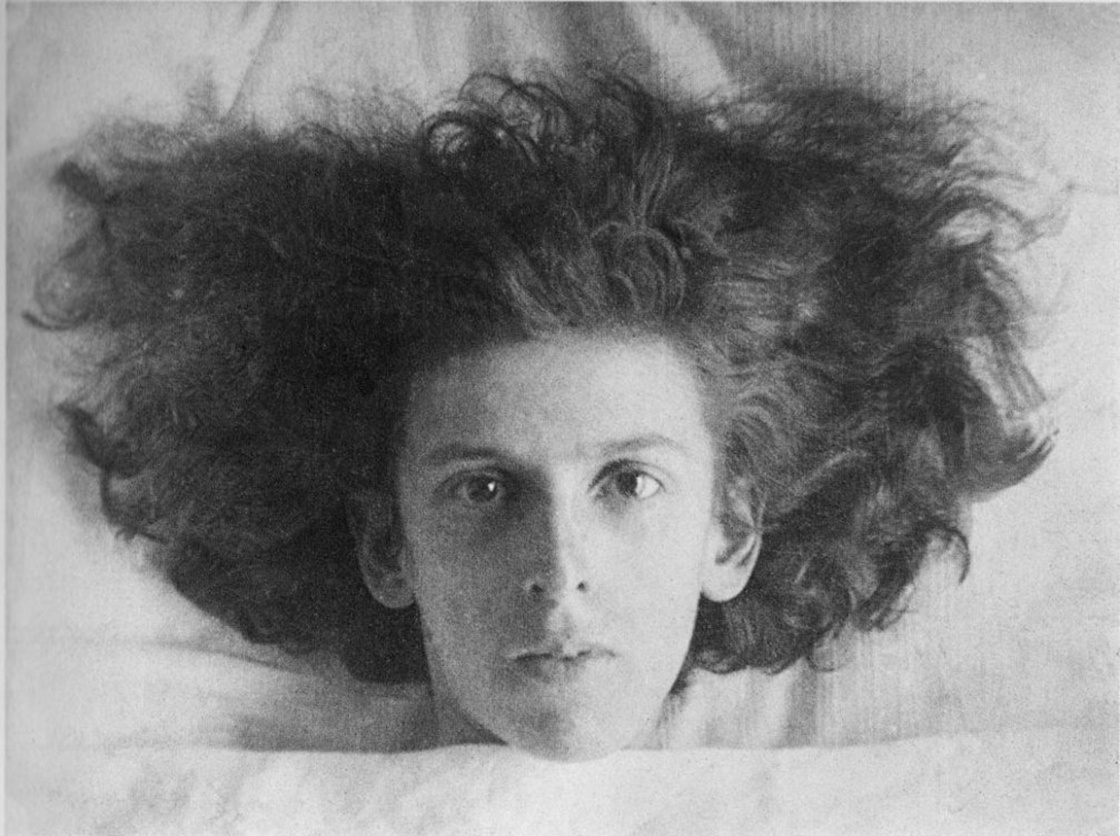
all images (except Cahun’s and Caravaggio’s and Bernini’s ) are shot by Luís Filipe Branco
“My Medusa 2019” arose as something of a surprise phenomenon during a photo- shoot last May with Portuguese photographer Luís Branco during a stay at the Obras Art Residency in Holland. We were working on a recreation of a self-portrait by French feminist surrealist artist Claude Cahun (1894-1954), made in 1914 when she was just 20 years old. I was 63 years old. Cahun’s head (and mine) appear almost disembodied, our necks and bodies not in the picture. Her gaze is direct, mine too. Both portraits confront the viewer.

Self-Portrait, Claude Cahun, c. 1914

When I first looked at these images last spring (there are hundreds from this shoot) – I had a strong, visceral response. These particular portraits shocked me, “OMG I look like Medusa!!” But I didn’t really know what I was looking at. Who is Medusa, anyway? Why do I look so much like her? What is she looking at? Who is she looking at?
I soon realized it would take several PhD’s and a lifetime of research to sift through the ambiguity of Medusa’s mythology- beginning with her original matrifocal goddess form, through more than two thousand years of violent patriarchal projection, and into an abundance of contemporary feminist re-readings of the myth. Is Medusa the ultimate femme fatale or a silenced tragic heroine? Was her transformation from beautiful maiden to hideous monster an act of punishment or protection?
I’m interested in her complicated and contrary personas. She repels and attracts at the same time, she is a snake monster and equally a femme fatale, she unites beauty with the beast. She is not always feminine, she displays male characteristics, you could say “queer” characteristics. She hangs out at the gates of Hades and lingers in the twilight zone between life and death. She represents a liminal space between the visible and the invisible. She occupies a territory where dreams and the unconscious are displayed.
And then there is the “gaze”… (the one that only turns men to stone) and the question of who is looking at who?
Despite formal likeness, My Medusa 2019 and Cahun’s self-portrait are very different images and perhaps together represent the duality of Medusa’s myth. Cahun’s twenty-year-old body is obscured (detached), her young face devoid of femininity. Her androgyny is an act of feminist defiance. By covering her body she denies the male gaze its pleasure. Cahun’s young face lends itself to the blankness of her stare – she offers a stone-faced affront to misogyny.
My portrait is different. I am older, I wear make-up. My sexuality is clearly evident. This is also an act of feminist defiance. I am an older woman, but I refuse to become invisible. Instead, I challenge the male gaze by daring them to look at me. My stare is a boldfaced claim to power well-earned.
So of course Medusa came to me when I was lying on this pillow inhabiting a dreamlike space with Claude Cahun as my inspiration, looking out directly at the camera (and it is Cahun’s gaze, always, that lures me in and her unabashed feminist/queer power that holds my own). Medusa and Cahun bring up similar questions for me – how am I looking at myself in this work and how am I expecting others to look upon me? How am I casting my gaze upon myself, am I finding new versions of my selves, am I manipulating Luís Branco’s gaze upon me, is he manipulating mine? Am I asserting the camera as a mirror, my gaze as gendered, as feminist? Are these images intersubjective, subjective, objective, unconscious, self- conscious? Am I subject or object or both?



I have to sneak in Caravaggio’s Medusa (he paints his own face within her snake-like hair):

Medusa, Caravaggio, c. 1595.

and Bernini turns Medusa to stone:

Medusa, Gian Lorenzo Bernini, 1630.
and Luís Branco makes My Medusa a ghost:

Happy New Year / New Decade and Medusa lives on…
end note: I have revised this several times with help from writers Barbara Shark and Sarah Millar. Helen Cixous would be proud. It is hard work finding My Medusa’s “voice” and I will persevere.
Looks good!
LikeLike
Thanks Barb for all your help!!!
LikeLike
Have you tried it with snakes? Hopeful New Year to all….
LikeLiked by 1 person
I have not embodied her that much yet!! Yes let’s hope for a good New Year and New Decade!! xo Sherry
LikeLike
Thanks for sharing .. enjoyed your journey.
Joyful New Year
LikeLike
Thank you Yalonda. Good hair don’t you think 🙂 xo Sherry
LikeLike
Sherry, amazing visual and thought for 2020
PH
LikeLike